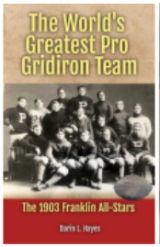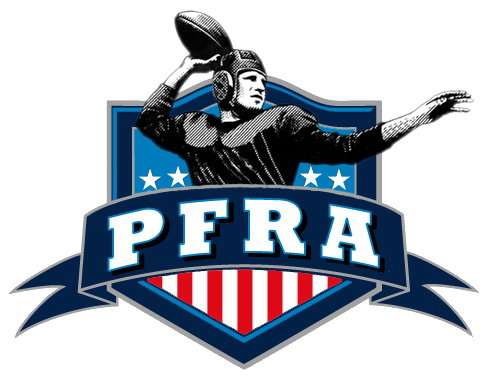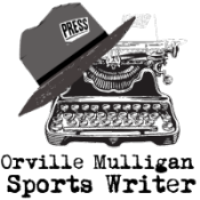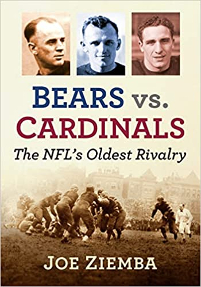There are not too many teams that come to mind to the fan of college football more than the Trojans of Southern Cal. The program got its start way back in 1888 and has been going strong ever since. The USC Trojans football program represents the University of Southern California in American football. This is one of the most successful programs in CFB history, with 11 claims to the national title. Oh, and the great players list is too long to list, but how about five Trojan tailbacks have won the coveted Heisman Trophy: Mike Garrett (1965), O.J. Simpson (1968), Charles White (1979), Marcus Allen (1981) and Reggie Bush (2005, later vacated). Carson Palmer in 2002 and Matt Leinart in 2004 became the first USC quarterbacks to win the Heisman. How about the guys at the top, like Legendary coaches Howard Jones, John McKay, John Robinson, and Pete Carroll? There is so much history to enjoy about the USC gridiron, so please start here with these fantastic posts!
Football History
USC Trojans Football History
The 1922 Rose Bowl
Celebrate 2 of the top Gridiron Coaches in history in the latest Pigskin Dispatch book When Greasy Met the Wonder Coach
Greatest Pro Team
Who was the MOST DOMINANT team in Pro Football History? We have the answer in the latest Pigskin Dispatch book The World's Greatest Pro Gridiron Team
FREE Daily Sports History
You are only seconds away from receiving the Pigpen's Newsletter everyday filled with new items
SUBSCRIBE BY CLICKING
_________________________
Lynn Swann Super Bowl MVP along with Pro and College Football Hall of Fame Wide Receiver
Born March 7, 1952, in Alcoa, Tennessee, was the graceful pass-catching wide out of the USC Trojans of the early 1970, Lynn Swann.
Swann forged a remarkable career as a wide receiver, leaving an indelible mark on college and professional football.
-College Career
Swann's collegiate journey unfolded at the University of Southern California (USC), where he became a key component of the Trojans' potent offense. Under the guidance of legendary coach John McKay, he showcased his exceptional athleticism, leaping ability, and sure hands. He was vital to USC's success in the early 1970s, contributing to their national championship victories. His graceful style and clutch performances made him a favorite and a highly regarded player.
-Road to the Pro Game
Swann's outstanding college career led to his selection in the first round (13th overall) of the 1974 NFL Draft by the Pittsburgh Steelers. He spent his entire professional career with the Steelers, becoming a key figure in their dominant era of the 1970s.
-Football Legacy
Lynn Swann's football legacy is defined by his crucial role in the Pittsburgh Steelers' "Steel Curtain" dynasty. He was a key target for quarterback Terry Bradshaw, known for his acrobatic catches and ability to make big plays in crucial moments. He was vital to the Steelers' four Super Bowl victories (IX, X, XIII, and XIV). His performance in Super Bowl X, where he made several spectacular catches, including a leaping 53-yard reception, earned him the Super Bowl MVP award. He was known for his graceful style, intelligence, and clutch performances. He was inducted into the Pro Football Hall of Fame in 2001.
-Accolades, Awards and Career Stats
-4× Super Bowl champion (IX, X, XIII, XIV)
-Super Bowl X MVP
-3× Pro Bowl (1975–1977)
-3× Second-team All-Pro (1975–1977)
-NFL 1970s All-Decade Team
-Pittsburgh Steelers All-Time Team
-College Football Hall of Fame inductee (1993)
-Pro Football Hall of Fame inductee (2001)
-Receptions: 336
-Receiving yards: 5,462
-Receiving touchdowns: 51
-Career NFL statistics
Receptions: 336
Receiving yards: 5,462
Receiving touchdowns: 51
Stats at Pro-Football-Reference.com
Lynn Swann's combination of athleticism, grace, and clutch performances cemented his place among the NFL's greatest wide receivers and solidified his legacy as a key figure in the Pittsburgh Steelers' storied history.
Swann forged a remarkable career as a wide receiver, leaving an indelible mark on college and professional football.
-College Career
Swann's collegiate journey unfolded at the University of Southern California (USC), where he became a key component of the Trojans' potent offense. Under the guidance of legendary coach John McKay, he showcased his exceptional athleticism, leaping ability, and sure hands. He was vital to USC's success in the early 1970s, contributing to their national championship victories. His graceful style and clutch performances made him a favorite and a highly regarded player.
-Road to the Pro Game
Swann's outstanding college career led to his selection in the first round (13th overall) of the 1974 NFL Draft by the Pittsburgh Steelers. He spent his entire professional career with the Steelers, becoming a key figure in their dominant era of the 1970s.
-Football Legacy
Lynn Swann's football legacy is defined by his crucial role in the Pittsburgh Steelers' "Steel Curtain" dynasty. He was a key target for quarterback Terry Bradshaw, known for his acrobatic catches and ability to make big plays in crucial moments. He was vital to the Steelers' four Super Bowl victories (IX, X, XIII, and XIV). His performance in Super Bowl X, where he made several spectacular catches, including a leaping 53-yard reception, earned him the Super Bowl MVP award. He was known for his graceful style, intelligence, and clutch performances. He was inducted into the Pro Football Hall of Fame in 2001.
-Accolades, Awards and Career Stats
-4× Super Bowl champion (IX, X, XIII, XIV)
-Super Bowl X MVP
-3× Pro Bowl (1975–1977)
-3× Second-team All-Pro (1975–1977)
-NFL 1970s All-Decade Team
-Pittsburgh Steelers All-Time Team
-College Football Hall of Fame inductee (1993)
-Pro Football Hall of Fame inductee (2001)
-Receptions: 336
-Receiving yards: 5,462
-Receiving touchdowns: 51
-Career NFL statistics
Receptions: 336
Receiving yards: 5,462
Receiving touchdowns: 51
Stats at Pro-Football-Reference.com
Lynn Swann's combination of athleticism, grace, and clutch performances cemented his place among the NFL's greatest wide receivers and solidified his legacy as a key figure in the Pittsburgh Steelers' storied history.
COLLEGE HOF | ‣
Morley Drury USC Trojan Legend
Born February 15, 1903, in Midland, Ontario, Canada, as the great Southern Cal Quarterback of yesteryear, Morley Drury arrived into this life. While not as widely celebrated as some of his contemporaries, Drury's football career represents a significant chapter in the sport's early days, particularly on the West Coast. Drury became a multi-sport athlete at the University of Southern California (USC) in the mid-1920s.
Drury's prowess on the gridiron earned him national recognition. As a standout halfback, he was known for his speed, agility, and powerful running style. He played a crucial role in USC's rise to national prominence, contributing to their undefeated season in 1927, his senior year and captaincy. He led USC to an 8-1-1 record, sharing the Pacific Coast Conference title with Stanford. Despite a narrow loss to Notre Dame, Drury's exceptional performance, including 180 yards and three touchdowns against Washington (earning him a 10-minute standing ovation), propelled the Trojans forward. He topped the team in scoring (76 points) and rushing (1163 yards), earning All-America honors. His rushing yardage was a USC first, exceeding 1,000 yards, and remained a record until Mike Garrett surpassed it in 1965. His exceptional performance that year garnered All-American honors, solidifying his place among the elite players of his time.
Beyond his athletic abilities, Drury was recognized for his leadership and sportsmanship. He was respected on and off the field, admired by teammates and opponents. His character and dedication to the game exemplified the values college football sought to instill in its players.
Following his collegiate success, Drury briefly played professional football before transitioning to a career in acting. While his time in the NFL was short-lived, his impact on the college game remained indelible. In 1954, Morley Drury was inducted into the College Football Hall of Fame, a testament to his outstanding contributions to the sport and his enduring legacy as one of USC's football legends.
-Height 6 ft 0 in (1.83 m)
-Weight 185 lb (84 kg)
-Career History
-College USC (1925–1927)
-High school Long Beach Tech
-Career highlights and awards
-Consensus All-American (1927)
-Third-team All-American (1925)
-2× First-team All-PCC (1925, 1927)
-Midland Sports Hall of Fame
-College Football Hall of Fame (1954)
Morley Drury. (2025, February 12). In Wikipedia. https://en.wikipedia.org/wiki/Morley_Drury
Drury's prowess on the gridiron earned him national recognition. As a standout halfback, he was known for his speed, agility, and powerful running style. He played a crucial role in USC's rise to national prominence, contributing to their undefeated season in 1927, his senior year and captaincy. He led USC to an 8-1-1 record, sharing the Pacific Coast Conference title with Stanford. Despite a narrow loss to Notre Dame, Drury's exceptional performance, including 180 yards and three touchdowns against Washington (earning him a 10-minute standing ovation), propelled the Trojans forward. He topped the team in scoring (76 points) and rushing (1163 yards), earning All-America honors. His rushing yardage was a USC first, exceeding 1,000 yards, and remained a record until Mike Garrett surpassed it in 1965. His exceptional performance that year garnered All-American honors, solidifying his place among the elite players of his time.
Beyond his athletic abilities, Drury was recognized for his leadership and sportsmanship. He was respected on and off the field, admired by teammates and opponents. His character and dedication to the game exemplified the values college football sought to instill in its players.
Following his collegiate success, Drury briefly played professional football before transitioning to a career in acting. While his time in the NFL was short-lived, his impact on the college game remained indelible. In 1954, Morley Drury was inducted into the College Football Hall of Fame, a testament to his outstanding contributions to the sport and his enduring legacy as one of USC's football legends.
-Height 6 ft 0 in (1.83 m)
-Weight 185 lb (84 kg)
-Career History
-College USC (1925–1927)
-High school Long Beach Tech
-Career highlights and awards
-Consensus All-American (1927)
-Third-team All-American (1925)
-2× First-team All-PCC (1925, 1927)
-Midland Sports Hall of Fame
-College Football Hall of Fame (1954)
Morley Drury. (2025, February 12). In Wikipedia. https://en.wikipedia.org/wiki/Morley_Drury
Ron Mix Tough Guy in the Trenches
Ron Mix, born March 10, 1938, in Los Angeles, California, established himself as one of the most dominant offensive linemen in professional football history. His career, marked by exceptional talent and unwavering dedication, left an indelible mark on the sport.
The 6’-4” 250 pound tackle from Southern Cal Ron Mix was the number one pick in the 1950 NFL and AFL Drafts. The NFL’s Baltimore Colts and the San Diego Chargers of the AFL got in a bidding war of sorts and Mix wisely took the better offer, keeping him in Southern California where he spent all of his life.
-College Career
Mix's football journey began at the University of Southern California (USC), where he played as an offensive tackle. His time with the Trojans showcased his exceptional athleticism and technical prowess. He was a key contributor to USC's success, earning recognition as one of the top linemen in the nation. His performance at USC laid the groundwork for his remarkable professional career.
-Road to the Pro Game
In 1960, Ron Mix was drafted by both the Baltimore Colts of the NFL and the Boston Patriots of the fledgling American Football League (AFL). Ultimately, he chose to sign with the AFL's San Diego Chargers, a decision that proved pivotal. He became a cornerstone of the Chargers' offensive line, providing crucial protection for the team's potent passing attack. Mix spent the majority of his career with the San Diego Chargers, and finished his career with the Oakland Raiders.
-Football Legacy
Ron Mix's football legacy is defined by his exceptional skill and dedication. He was a dominant force on the offensive line, known for his intelligence, technique, and durability. His contributions to the Chargers during the AFL's formative years were instrumental in the league's success. Beyond his playing career, Mix has been recognized as a prominent figure in football history, with his induction into the Pro Football Hall of Fame.
-Accolades, Awards and Career Stats
-AFL All-Star: 8 times.
-AFL All-Time Team.
-Pro Football Hall of Fame inductee.
-Earned All-American honors in 1959 at USC.
-Played for the San Diego Chargers, and the Oakland Raiders.
Ron Mix's career exemplifies the highest standards of excellence in professional football. His contributions to the game, both on and off the field, have earned him a place among the sport's greatest players.
The 6’-4” 250 pound tackle from Southern Cal Ron Mix was the number one pick in the 1950 NFL and AFL Drafts. The NFL’s Baltimore Colts and the San Diego Chargers of the AFL got in a bidding war of sorts and Mix wisely took the better offer, keeping him in Southern California where he spent all of his life.
-College Career
Mix's football journey began at the University of Southern California (USC), where he played as an offensive tackle. His time with the Trojans showcased his exceptional athleticism and technical prowess. He was a key contributor to USC's success, earning recognition as one of the top linemen in the nation. His performance at USC laid the groundwork for his remarkable professional career.
-Road to the Pro Game
In 1960, Ron Mix was drafted by both the Baltimore Colts of the NFL and the Boston Patriots of the fledgling American Football League (AFL). Ultimately, he chose to sign with the AFL's San Diego Chargers, a decision that proved pivotal. He became a cornerstone of the Chargers' offensive line, providing crucial protection for the team's potent passing attack. Mix spent the majority of his career with the San Diego Chargers, and finished his career with the Oakland Raiders.
-Football Legacy
Ron Mix's football legacy is defined by his exceptional skill and dedication. He was a dominant force on the offensive line, known for his intelligence, technique, and durability. His contributions to the Chargers during the AFL's formative years were instrumental in the league's success. Beyond his playing career, Mix has been recognized as a prominent figure in football history, with his induction into the Pro Football Hall of Fame.
-Accolades, Awards and Career Stats
-AFL All-Star: 8 times.
-AFL All-Time Team.
-Pro Football Hall of Fame inductee.
-Earned All-American honors in 1959 at USC.
-Played for the San Diego Chargers, and the Oakland Raiders.
Ron Mix's career exemplifies the highest standards of excellence in professional football. His contributions to the game, both on and off the field, have earned him a place among the sport's greatest players.
COLLEGE HOF | ‣
Erny Pinkert a USC Trojans Tribute
Erny Pinkert's college football career at USC was a masterclass in offensive versatility and dominance.
Here's a breakdown of his achievements:
-Dual-Threat Superstar: Pinkert wasn't just a gifted runner, but also a skilled passer and defensive back. He excelled as a halfback, showcasing impressive speed, agility, and elusiveness. His passing prowess added another dimension to the USC offense, making him a true offensive weapon.
-Record-Breaking Accolades: Pinkert's impact is undeniable. He was a consensus All-American selection in 1930, a prestigious honor recognizing the best players in the nation. He contributed significantly to USC's success, helping them secure Rose Bowl victories in 1928 and 1932.
-Legacy as an Innovator: Pinkert's talent inspired coaches to develop innovative offensive plays to utilize his diverse skillset. His success as a dual-threat back helped redefine the role of the halfback position in college football.
-A Hall of Fame Career: Pinkert's dominance was recognized with his induction into the College Football Hall of Fame in 1957.
Erny Pinkert's legacy extends beyond statistics and accolades. He was a pioneer who paved the way for future generations of versatile offensive players. His impact on the USC Trojans program and the evolution of the halfback position makes him a true college football legend.
USC honors Erny Pinkert as one of their greatest players that have worn the number 17 jersey on the gridiron.
Here's a breakdown of his achievements:
-Dual-Threat Superstar: Pinkert wasn't just a gifted runner, but also a skilled passer and defensive back. He excelled as a halfback, showcasing impressive speed, agility, and elusiveness. His passing prowess added another dimension to the USC offense, making him a true offensive weapon.
-Record-Breaking Accolades: Pinkert's impact is undeniable. He was a consensus All-American selection in 1930, a prestigious honor recognizing the best players in the nation. He contributed significantly to USC's success, helping them secure Rose Bowl victories in 1928 and 1932.
-Legacy as an Innovator: Pinkert's talent inspired coaches to develop innovative offensive plays to utilize his diverse skillset. His success as a dual-threat back helped redefine the role of the halfback position in college football.
-A Hall of Fame Career: Pinkert's dominance was recognized with his induction into the College Football Hall of Fame in 1957.
Erny Pinkert's legacy extends beyond statistics and accolades. He was a pioneer who paved the way for future generations of versatile offensive players. His impact on the USC Trojans program and the evolution of the halfback position makes him a true college football legend.
USC honors Erny Pinkert as one of their greatest players that have worn the number 17 jersey on the gridiron.
COLLEGE HOF | ‣
Ricky Bell
The life and career bio of College Football Hall of Fame Running Back Ricky Bell. Born April 8, 1955, in Houston, Texas, was Southern Cal’s stellar running back Ricky Bell. Bell had some true perseverance to become a gridiron star and his versatility paid off huge.
Ricky originally reported to USC as a linebacker when he was a freshman. The coaching staff, noticing offensive potential flipped him over to the offensive team and used him as a fullback to block for Anthony Davis. By the time his junior season came around Ricky was the Bell Cow back, no pun intended, for the Trojans.
According to the National Football Foundation, in 1975 he led the nation in rushing with 1,875 yards, became a unanimous All-American, and placed third in the Heisman voting. In the postseason, he was named MVP of the Liberty Bowl. The following season, during his senior year, Bell placed second in the Heisman balloting and repeated as a unanimous All-America selection. Bell set a single game school record with 51 carries and 347 yards against Washington State and went over 100 yards on the ground in 16 different games of his collegiate career. Ricky Bell received the great honor of being selected for inclusion into the College Football Hall of Fame in 2003.
At the 1977 NFL Draft the Tampa Bay Buccaneers used the number one overall pick to claim Ricky for the franchise. He played six seasons for the Bucs and then tragically passed away due to cardiac arrest caused by a rare skin disease.
Ricky originally reported to USC as a linebacker when he was a freshman. The coaching staff, noticing offensive potential flipped him over to the offensive team and used him as a fullback to block for Anthony Davis. By the time his junior season came around Ricky was the Bell Cow back, no pun intended, for the Trojans.
According to the National Football Foundation, in 1975 he led the nation in rushing with 1,875 yards, became a unanimous All-American, and placed third in the Heisman voting. In the postseason, he was named MVP of the Liberty Bowl. The following season, during his senior year, Bell placed second in the Heisman balloting and repeated as a unanimous All-America selection. Bell set a single game school record with 51 carries and 347 yards against Washington State and went over 100 yards on the ground in 16 different games of his collegiate career. Ricky Bell received the great honor of being selected for inclusion into the College Football Hall of Fame in 2003.
At the 1977 NFL Draft the Tampa Bay Buccaneers used the number one overall pick to claim Ricky for the franchise. He played six seasons for the Bucs and then tragically passed away due to cardiac arrest caused by a rare skin disease.
This History of the USC Trojans Logo
Southern California Trojans Logo PNG The University of Southern California in Los Angeles, California, sponsors 21 athletic teams. The women’s teams may be referred to as either the Trojans or Women of Troy. Meaning and history 1976 - 1983 The name Trojans conjure up Ancient Greece and its legendary wars. So it is hardly a — 1000logos.net
The University of Southern California (USC) Trojans, a name that resonates with pride and heritage, have a football history that dates back to 1888. Their iconic logo, a symbol of their rich legacy, has evolved over the years, mirroring design trends and encapsulating the team's spirit. This essay takes you on a journey through the evolution of the USC Trojans football logo, from its humble beginnings as a sketch to its current status as a contemporary emblem of Trojan pride.
The Early Years (1888-1940s): Birth of the Trojan Warrior
The origin of the USC Trojans mascot, a tale steeped in mystery and intrigue, is a subject of much speculation. Some theories point to a Trojan horse parade float in 1888, while others suggest a student play depicting the Trojan War. Regardless of its enigmatic beginnings, the Trojan warrior was officially adopted as the mascot in 1922. The early iterations of the logo were simple and direct, often featuring a profile view of a Trojan helmet, accompanied by the letters' USC.' These initial designs, while lacking the intricacy of later versions, laid the foundation for the logo's evolution.
The Golden Age of Design (1950s-1970s): A More Muscular Warrior
The mid-20th century saw a significant shift in the USC Trojans logo. The 1950s ushered in a more dynamic and powerful image of the Trojan warrior. The helmet became more detailed, with a prominent plume and a fierce expression. The warrior's body, previously absent, began to take shape, often depicted in a robust and forward-facing pose. Influenced by the emerging trends in athletic branding, these iterations reflected the Trojans' growing reputation as a dominant force in college football.
The Modern Era (1980s-Present): Refinement and Versatility
The modern era of the USC Trojans logo has seen a focus on refinement and versatility. The essential elements – the helmet and the warrior – remain central, but the design has evolved to suit different applications. The 1980s saw a more stylized warrior with a simplified helmet and a more aggressive stance. Today's primary logo utilizes bold lines and a three-dimensional effect, presenting the warrior in a robust, forward-charging posture. This logo effectively translates across various media, from uniforms to merchandise. Additionally, a secondary logo featuring a more stylized Trojan helmet with a single plume has gained prominence for a more contemporary look.
John McKay Era of Trojan Football
Football History | The legendary USC Trojan Era of te Coach John McKay years with historian Rich Shmelter — pigskindispatch.com
John McKay was an important man in the coaching ranks of football in the 1960s and 70s. He turned programs around with his wit and gridiron knowledge in both the pro and college games.
Historian and author Rich Shmelter sat down with us recently to recant the brilliance of this icon of football.
1931 USC versus Notre Dame and The Origin of a Rivalry
The 1931 clash between the USC Trojans and Notre Dame Fighting Irish wasn't just any college football game. It was a pivotal moment in the sport's history, etching itself in lore for its dramatic comeback and its impact on the national championship conversation.
On November 21, 1931, when the USC Trojans traveled to South Bend to face Notre Dame it was a game for the ages! In fact, it is considered one of the Greatest College Games ever.
-Dominant Irish, Underdog Trojans: The stage was set for a classic. Notre Dame, boasting a 26-game unbeaten streak and national championship aspirations, entered the contest heavily favored. USC, on the other hand, carried a strong 6-1 record but lacked the national recognition of their opponents.
-A Fourth-Quarter Hail Mary: Notre Dame lived up to expectations early, building a seemingly insurmountable 14-0 lead heading into the final quarter. However, the Trojans refused to surrender. Led by quarterback Gaius Shaver and halfback Erny Pinkert, USC mounted a furious comeback. Key plays and a never-say-die attitude chipped away at the deficit.
-Johnny Baker's Game-Winner: With just over a minute remaining, the score tied at 14-14, USC faced a crucial fourth-down situation. Kicker Johnny Baker stepped up to the challenge, nailing a game-winning 33-yard field goal. This dramatic finish sent shockwaves through college football.
-A Turning Point: The 16-14 victory for USC not only snapped Notre Dame's unbeaten streak but also catapulted the Trojans into the national championship conversation. Though there wasn't a single, official title awarded back then, USC's dominant season, culminating in this upset victory, earned them recognition by many as the national champions.
-A Legacy of Drama: The 1931 USC-Notre Dame game is remembered as a testament to perseverance and the power of a well-executed comeback. It cemented the rivalry between these two powerhouse programs and stands as a landmark moment in college football history, forever immortalized as a classic example of grit and determination overcoming seemingly insurmountable odds.
On November 21, 1931, when the USC Trojans traveled to South Bend to face Notre Dame it was a game for the ages! In fact, it is considered one of the Greatest College Games ever.
-Dominant Irish, Underdog Trojans: The stage was set for a classic. Notre Dame, boasting a 26-game unbeaten streak and national championship aspirations, entered the contest heavily favored. USC, on the other hand, carried a strong 6-1 record but lacked the national recognition of their opponents.
-A Fourth-Quarter Hail Mary: Notre Dame lived up to expectations early, building a seemingly insurmountable 14-0 lead heading into the final quarter. However, the Trojans refused to surrender. Led by quarterback Gaius Shaver and halfback Erny Pinkert, USC mounted a furious comeback. Key plays and a never-say-die attitude chipped away at the deficit.
-Johnny Baker's Game-Winner: With just over a minute remaining, the score tied at 14-14, USC faced a crucial fourth-down situation. Kicker Johnny Baker stepped up to the challenge, nailing a game-winning 33-yard field goal. This dramatic finish sent shockwaves through college football.
-A Turning Point: The 16-14 victory for USC not only snapped Notre Dame's unbeaten streak but also catapulted the Trojans into the national championship conversation. Though there wasn't a single, official title awarded back then, USC's dominant season, culminating in this upset victory, earned them recognition by many as the national champions.
-A Legacy of Drama: The 1931 USC-Notre Dame game is remembered as a testament to perseverance and the power of a well-executed comeback. It cemented the rivalry between these two powerhouse programs and stands as a landmark moment in college football history, forever immortalized as a classic example of grit and determination overcoming seemingly insurmountable odds.
Related Titles
LYNN SWANNRelated Categories
GREATEST COLLEGE GAMES, COLLEGE FOOTBALL PROGRAMS, COLLEGE HOF, FOOTBALL HALL OF FAME, ABOUT SPORTS, FOOTBALL LEGENDRelated Searches
San Francisco 49ers, USC Trojans, sports:football, sports:pro football, PCD:SimpO, USC trojans, NFL Jersey:Number 32, altcategory:About Sports, altcategory:Coaches, altcategory:College Football, altcategory:College HOF, altcategory:Football Archaeology, altcategory:Football History, Conference:Big 10, NFL Jersey:Number 88, NFL Jersey:Number 43, football position:safety, NFL Jersey:Number 71, NCAAF Jersey:Number 71, football:Heisman winner, NCAAF Jersey:Number 33, EventDay:March 26, DOB:Marc, NCAAF Jersey:Number 22, NCAAF Jersey:Number 02, football position:quarterback, NFL Jersey:Number 74, NFL Jersey:Number 77, NCAAF jersey:Number 79, football position:tackle, NCAAF Jersey:Number 17, NCAAF Jersey:Number 42, author:Rich Shmelter, sports:college footballPreserving Gridiron History in a New Way!
Enjoy football history with some challenging word puzzle funThe Pigskin Dispatch Football Word Search
Proud to Support The Professional Football Researchers Association
To learn more about joining the fun in preserving football history go to The Official PFRA Website.
_________________________
We have placed some product links on this page. If you purchase by clicking on them, we will get a commission to use to help with operating costs.
Orville Mulligan: Sports Writer
We invite you to take a ride through 1920's sports history in the audio drama that takes the listener through the sounds and legendary events of the era through the eyes of a young newspaper journalist. You will feel like you were there!
Brought to you by Number 80 Productions and Pigskin Dispatch
_________________________
Gridiron Legacy: Pro Football's Missing Origin Story
Author Gregg Ficery tells the story of the beginnings of Pro Football through the pro football career of his Great Grandfather, Bob Shiring
_________________________
Sports History Network
A Proud Partner in the Headquarters of Sports Yesteryear, SHN.
_________________________
Sports Jersey Dispatch
If you like remembering players of the NFL by their numbers then you may also enjoy going uniform number by number in other team sports as well. We have it for you on our other website in baseball, basketball, hockey and more on the Sports Jersey Dispatch.
_________________________
Bears versus Cardinals: The NFL's Oldest Rivalry
Author Joe Ziemba the master historian of football in Chicago has released another beauty. It is titled Bears versus Cardinals: The NFL's Oldest Rivalry.
_________________________










